Memia 2022 year in review: Welcome... to the [Meta-] Polycrisis🤯
Surfing the Noosphere while putting out feelers to the Universe
Kia ora,
As a tumultuous, flexing 2022 draws to a close, here’s Memia’s wrapup annual review post looking back on 50 weekly newsletters, 16 Memia on Sunday posts, 1 podcast, 23 ⏩Fast Forward Aotearoa posts and thousands of tweets.
So, below my 11,000-word roundup of the year in ten themes:
🤯Welcome…to the [Meta-] Polycrisis
🦠💉Covid-19: “Post-” Pandemic
🔥🥵Climate change: 2.7 degrees looms
🎲⚔️Geopolitics: Risk, 2022 Edition, a whole new board game
▶️📢🛡️Disinformation: Splintered realities and epistemic security
📈Software and AI: A digital technology breakthrough every week
⚡Energy: Renewable energy renewed
🧬Biotechnology: Redesigning life itself
🌌Space: Putting out feelers to the universe
🤩Memes: Surfing the Noosphere
(⚠️PSA: Even more than usual this annual roundup is *way* too long for email clients…I recommend clicking on the title link above to read online or view in the Substack app.)
This year the Memia audience has continued to grow steadily with high engagement rates every week. My sincere thanks to all readers around the world for letting me into your inbox each week in 2022 — I hope you’ve enjoyed reading these newsletters and learn as much as I do from writing them! I’m looking forward to continuing to write in 2023 as the future unfolds even more rapidly around us…
🤯1. Welcome… to the [Meta-] Polycrisis
🌋Eruption disruption
2022 started with a bang…the staggering force of the planet’s geothermal energy was on full show when the uninhabited Tongan volcanic island of Hunga Tonga-Hunga Ha'apai erupted ferociously, unleashing tsunamis, ash clouds and a massive shockwave experienced as far as Aotearoa and beyond:
Tonga was cut off for weeks…. the island nation’s fragile internet connectivity was laid bare: the only undersea fibre cable was broken 37km offshore, taking nearly a month to reconnect.
But this natural disaster was only a portent for a year of escalating global uncertainty and instability. The word “Polycrisis” arrived in 2022 and perfectly describes the world's ongoing crises and their vortices of interaction with one another. The Polycrisis weaves together themes including:
human population increase (but declining birthrates…)
pandemics
fossil fuel emissions
climate change and its weather effects
pollution and biodiversity degradation
unsustainable food production and consumption
war
political instability
straining supply chains
unaligned artificial intelligence
mis/disinformation
existential risks (nuclear war…)
…and, ultimately, ecological and civilisational collapse.
One weekend in August I took a first go at capturing these interactions: Polycrisis causal loops. (Click to enlarge).
Far more sophisticated modelling heads towards similar conclusions:

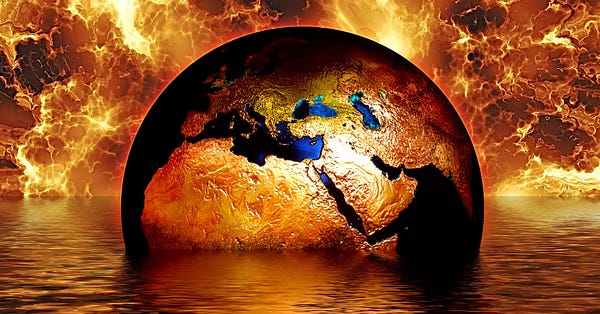
Happy days.
Tasting the Metacrisis pickle
But the Polycrisis has stimulated a new golden age of modern Philosophy. In 2022, many deep, edge thinkers around the world have been exploring the space around the immediate symptoms of the Polycrisis for deeper answers (and potential solutions…)
These approaches are loosely grouped under the alternative term “Meta-Crisis”:

If you are so inclined, I would highly recommend diving in to get a broader sense of what might really be going on underneath it all… Good jumping off points include:
Tasting the Pickle: Ten flavours of meta-crisis and the appetite for a new civilisation
The Liminal Web: Mapping An Emergent Subculture Of Sensemakers, Meta-Theorists & Systems Poets
Now, onwards to cataloguing the more tangible events from this year…
🦠💉2. “Post-” Pandemic
At the start of 2022, after nearly two years of Covid-19 pandemic ravaging the world, the highly infectious new Omicron variant was spreading rapidly around the world, rendering previously robust virus controls largely ineffective.
Because of its closed border and strict lockdown measures, my country Aotearoa (the “hermit nation” since 2020) managed to achieve very high (close to 90%) vaccination rates internationally, pushing through a rapid rollout of “booster” doses during early 2022:

However, inevitably Omicron made it through the border at the beginning of the year and surged through the population from February. Any remaining border controls were rendered ineffective and the government announced a progressive wind down of its controversial Managed Isolation Quarantine (MIQ) system which had left kiwis stranded overseas for years — perversely as a wave of Covid-19 spread through the country…

The border was finally reopened in full at the start of May 2022… reopening Aotearoa to the world for the first time in over 2 years.
Globally, official WHO statistics record over 6.5 million deaths worldwide since the start of the pandemic:

(But some scientific studies estimate the official toll at 3 times official statistics).
Internationally, most countries (including Aotearoa) are now operating in an official “post-pandemic” mode with restrictions lifted entirely.
China pandemic dystopia
The major exception here was China: throughout 2022 whole parts in the country lurched in and out of region-wide lockdowns. The most dystopian scenes were captured on social media and some made it through the Great Firewall of state censorship.
This 77-minute montage of 100+ video clips and still photos from the Shanghai lockdown in April 2022: building entrances boarded up, last-mile food supply chains collapsed so that people went without food for days, children were separated from their families and sent to mass quarantine centres, entire high rise neighbourhoods echoed to screaming at night, street protests and military vehicles on the streets.
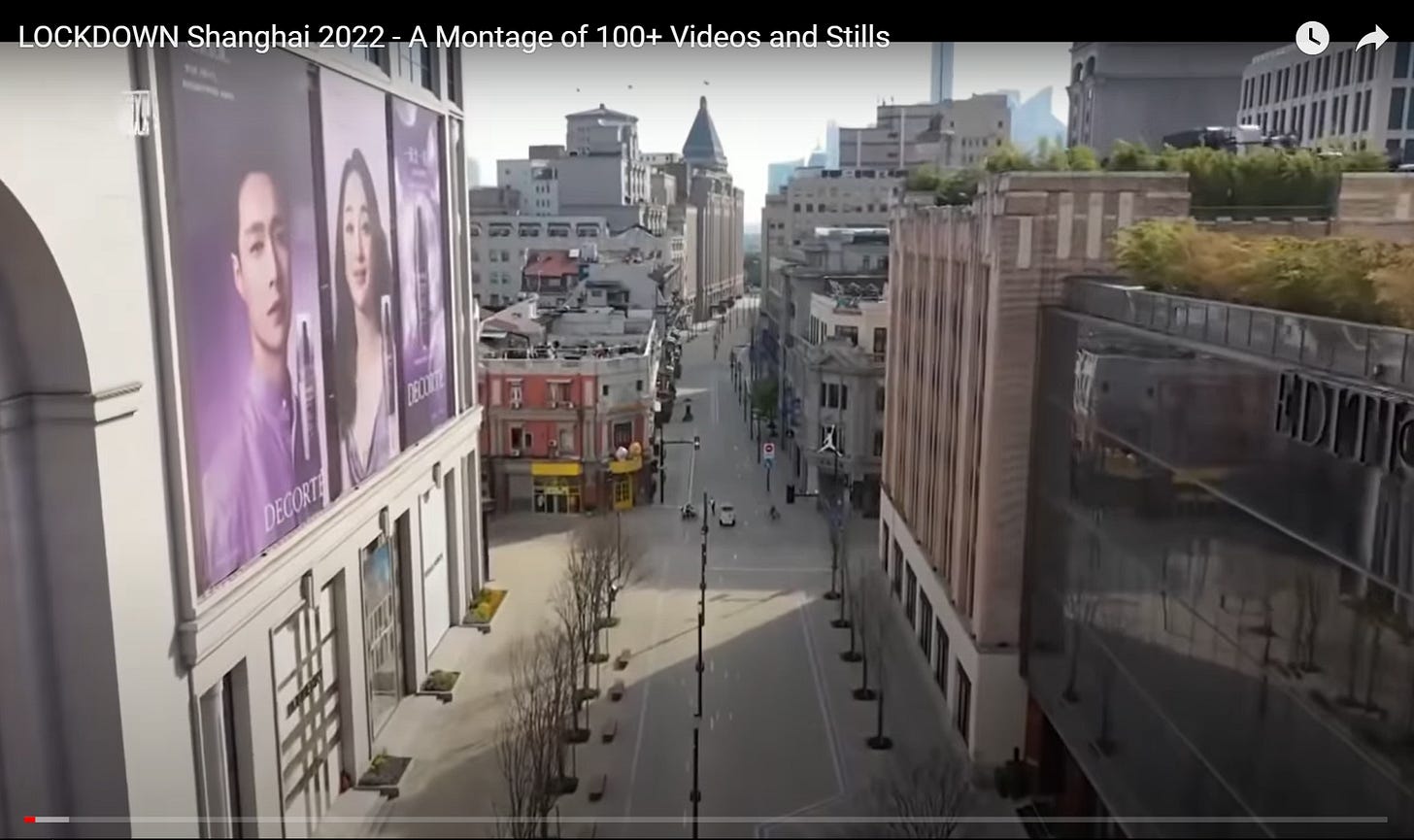
But the most dystopian videos were these of drones and robots being used for depersonalized crowd control:

China kept up a strict adherence to its Dynamic Zero-Covid policy throughout most of 2022 (including at the Beijing Winter Olympics in February including a bio-secure bubble for international athletes separated from the Chinese public). Citizens had to test nearly every day with their freedom of movement controlled by a smartphone app.
But (…not uncoincidentally after Xi had been safely re-appointed to a third term as president….) protests in November have led to a rapid dismantling of pandemic restrictions. But China’s vaccination status is poor relative to other countries and some modelling is now predicting up to 1 million Chinese Covid-19 deaths through 2023, further challenging China’s shaky demographics:
Whatever doesn’t kill you…
Some countries (not Aotearoa yet…) have begun rolling out Bivalent vaccines which provide broader spectrum protection from both the original strain and Omicron. But SARS-Cov-2 continues to mutate rapidly, with new Omicron-derived variants including BQ.1, BQ.1.1, XBB, and XBB.1 becoming more effective at evading vaccines and natural immunity.

Evidence on the long term health effects of Covid-19 are still unclear but symptomatic “Long Covid” appears to affect between 5% and 50% of a population depending on definition. Furthermore, it is now clear that Covid-19 reinfections are going to be commonplace and that disease risks are significantly greater after multiple Covid-19 reinfections:

“Post-” Pandemic
The knock-on effects of the Covid-19 pandemic have contributed to the polycrisis in other ways — broken supply chains, public health services strained to breaking point, disrupted education, changes to socialising patterns as (at least some) people avoid crowded indoor environments.
But politicical announcements that the world is “Post-Pandemic” — and should just get back to “normal” — are just wishful thinking. Waves of new variants continue to pulse through populations globally (combined with other respiratory diseases such as influenza and RSV - with Covid-19 reducing general immunity).
Infection-reducing behaviours (particularly mask-wearing) are proven to reduce infections… but the population at large appear to be socially averse to upholding any of these measures voluntarily…

So for me at least, I will be taking a rational long term view. Looking at the emerging evidence on reinfection, I want myself aged 80 to thank me aged (nearly) 50 for reducing my exposure to SARS-Cov-2 during the 2020s while the pandemic was still its most pathogenic and herd immunity / treatments were still in their early stages.
Personal investment now to preserve health in later life seems the only effective tool. N95 mask back on in crowded indoor spaces. Every body for themselves.
🔥🥵3. Climate change: 2.7 degrees looming
2022 saw continued record rises in CO2 concentrations…

…methane concentrations…
…temperatures, wildfires…

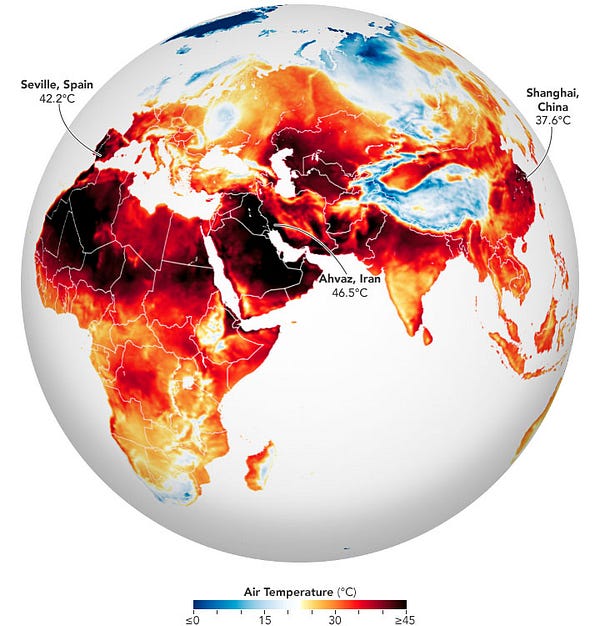
…melting ice…

…droughts…


…extreme weather events…

COP Out
This year’s UN IPCC COP27 conference held in Egypt fizzled out into even more of an ineffectual talking shop than previous conferences:

2021’s COP26 commitments to keeping temperature rises to only 1.5 degrees C now appear to be dead in the water, with current policy projections pointing to 2.7 degrees of warming or more:

Meanwhile, humanity:
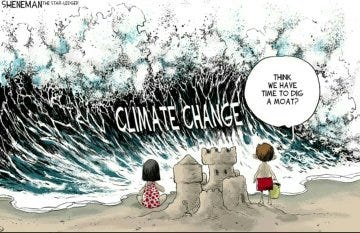
🖕Up yours
While the agenda aimed to introduce a “loss and damage” finance framework to offset the fundamental inequity around climate change: namely, that developed economies are responsible for the vast majority of the world’s emissions, yet poorer developing economies are being forced to wear the consequences.
Although the COP27 conference did manage to establish a Loss and Damage fund, to support the developing world adapt to a worsening climate crisis. Despite UN research that this could cost developing countries anywhere from US$160-US$340 billion annually by 2030 (US$565 billion by 2050 if climate change accelerates), “no decisions were reached on who should pay into the fund, where this money will come from and which countries will benefit.” The biggest “up yours” from the global north to the global south imaginable.
Maintaining climate action momentum
In amidst the climate DOOM vibes, some bright spots:
The world’s largest methane emissions can now be spotted by satellite. NASA’s new Earth Space Mission has been mapping the world’s Methane ‘Super-Emitters’:
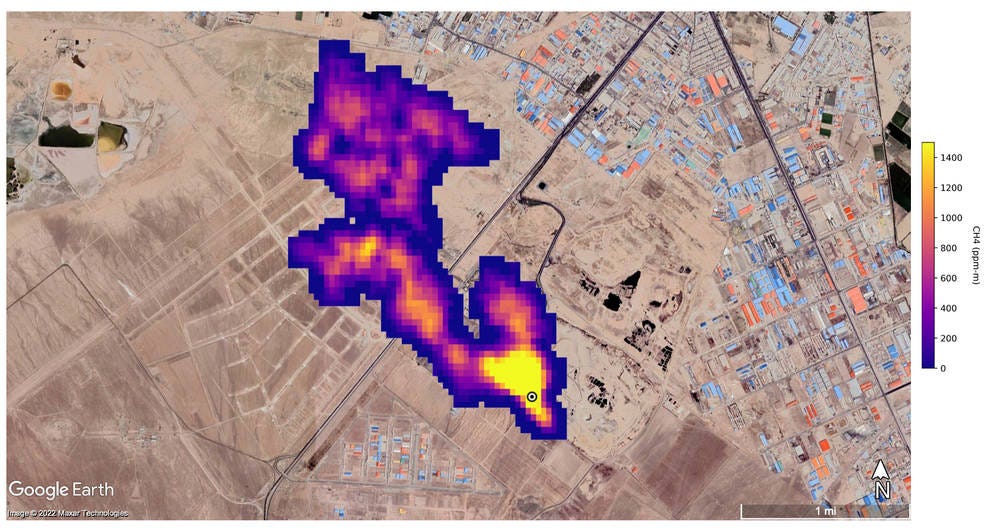
Deployment of renewable solar and wind energy sources have accelerated a lot in the last few years and solar looks set to overtake coal by 2027:

Source: IEA Renewables 2022 report (Nonetheless, Global CO2 emissions from fossil fuels still hit a record high in 2022).
A number of countries (in particular Sweden) have successfully decoupled economic growth from energy use, even taking offshored production into account.
Major advances in renewable energy technologies (see highlights later on) promise continued acceleration of the transition away from fossil fuels:

Reducing emissions by 2050 through six technological avenues. Credit: IRENA, 2022 The US Inflation Reduction Act 2022. Period.
Despite (predictable) pushback from incumbent agricultural industry, frameworks to measure, price and reduce agricultural GHG emissions are being implemented around the world. Aotearoa’s He Waka Eke Noa Primary Industry Climate Action Partnership is on track to finally include GHG emissions pricing for Aotearoa’s farmers by 2025.
The rate of deforestation around the world is declining (but not yet reversing):
🌍🌎🌏The 64 million square kilometre question
Most long-term national climate strategies are betting on forests and soils to reach net-zero.
In June 2022, a new scientific study was published in the journal Science: The minimum land area requiring conservation attention to safeguard biodiversity. Described by the authors as "a conservation plan for the planet", the study used data modeling and algorithmic projections to map optimal areas for conserving species and ecosystems around the world.
According to their modelling, the minimum global land area requiring conservation to prevent major biodiversity losses is at least 64 million square kilometres (44% of the world’s land area):
"We must act fast, our models show that over 1.3 million square kilometers of this important land — an area larger than South Africa — is likely to have its habitat cleared for human uses by 2030, which would be devastating for wildlife"
— Lead study author James R. Allan, University of Amsterdam.
Possibly the most significant political question of our coming decade is how much land we should restore back to natural ecosystem conservation - and how this transition will be achieved economically.
Could Aotearoa be the first country in the world with over 60% (…70%?….80%?!) of its land area managed as a conservation estate for the survival of future species and ecosystems? This shift would require a fundamental cultural mindset change in rural regions as well — away from an ingrained centuries-old conviction that “productive” land is only that used for agriculture and food production. Adopting new economic frameworks which place more explicit “monetary” value on natural capital will be crucial to achieving this. (The acceleration of urban / vertical farming technologies should assist with this transition…)
Ultimately regenerating natural forest ecosystems is the simplest action to take — RegenerateNZ is one of a number of grassroots initiatives aiming to buy exotic pine forest and convert to native bush over time. I am one of the 35 Kiwi about to buy a forest, want to join us?
Reversing global warming?
Finally, despite huge scepticism from many quarters, there has been continuing research into technology-based solutions for reversing climate change, notably:
Atmospheric CO2 removal at sea:
Engineered nanoparticles in ocean fertilisation for large-scale atmospheric CO2 removal as “marine snow” which settles to the bottom of the ocean:
Direct Air Carbon Capture and Storage (DACCS):
POC DACCS plants continued to be built out in 2022.
Leader Climeworks broke ground to build its newest and largest “Mammoth” DACCS facility in Iceland, with “a nominal CO₂ capture capacity of 36’000 tons per year when fully operational”. Climeworks claims to be targeting multi-megaton capacity in the 2030s, towards gigaton capacity by 2050.
California-based startup Heirloom (backed by Microsoft) uses continuous limestone heating cycle to capture CO2 from the atmosphere and storing the extracted CO2 underground.
But the scaled economics of DACCS are still precarious, but a 2022 IEA analysis illustrated potential to reach the crucial US$100/tonne of CO2 captured:
“With deployment and innovation, capture costs could fall to under USD 100/tCO2. DAC costs are dependent on the capture technology (solid- or liquid-based technologies), energy costs (price of heat and electricity), specific plant configuration and financial assumptions. In locations with high renewable energy potential and using best available technologies for electricity and heat generation, DAC costs could fall below USD 100/tCO2 by 2030…however, the potential for costs to fall to these levels will be strongly dependent on increased public and private support for innovation and deployment” — IEA

Source: IEA
Space bubble shield:
In amongst several other geoengineering approaches, a team at the MIT Senseable City Lab explored a massive solution located out in space……arriving at a design made up of thin film bubbles, manufactured directly in outer space and forming an extensive deflective raft positioned at the Lagrangian Point between the Earth and the Sun. It’s beautiful:
““If climate change has already gone too far, what could be our emergency solutions? …Geoengineering might be our final and only option. Yet, most geoengineering proposals are earth-bound, which poses tremendous risks to our living ecosystem. Space-based solutions would be safer – for instance if we deflect 1.8% of incident solar radiation before it hits our planet, we could fully reverse today's global warming”
Looking back to look forward
It’s clear that the inertia in humanity’s energy systems will take decades to arrest, let alone reverse. CO2 and methane levels are set to continue increasing relentlessly and all life on the planet will be forced to adapt (or perish in the process). A look at the geological record points to the potential significance… last time the CO2 concentrations hit projected 2100 levels (c. 55 million years ago), crocodiles roamed the Arctic.

In particular next year watch out for the fast-collapsing Thwaites Glacier in Antarctica. If the whole glacier falls into the ocean over the next decade, sea levels would rise by up to 65 centimetres.
4. 🎲⚔️🇺🇦Risk, 2022 Edition: a whole new board game
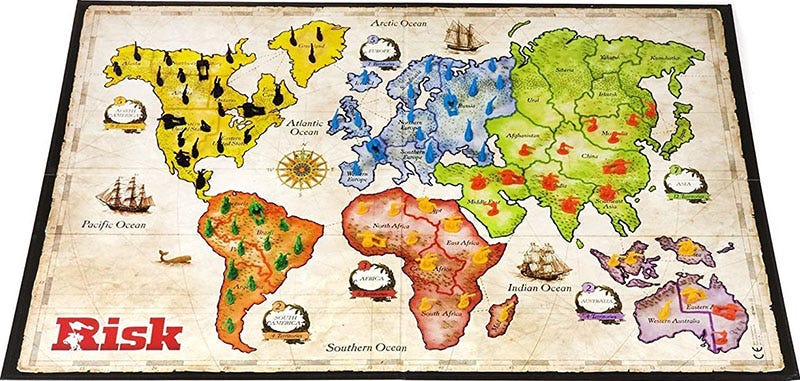
I wrote briefly about the new rules of 21st Century Risk way back in Memia 2020.24:
“In the traditional game of Risk, political powers conquer bordering territories using constantly-reinforced armies. It’s a game of scale, power, dominance (and, of course, dice🎲).
…What are the new rules for 21st Century Risk? (Indeed, what are the new aims to win the game?!)”
2022 was a year when global geopolitical tensions escalated beyond anything most of us have known since the end of the Cold War. And technology played an increasing part.
🇺🇦✊Russia’s brutal, grinding, illegal war against Ukraine
On February 24th, Russia began a brutal attempted invasion of Ukraine. Its tactics of shelling civilian targets left large parts of the East of the country in ruins. Numerous war crimes have been uncovered which are pending prosecution.
No words.
For months, it was hard not to become obsessed with every little piece of information coming out of Ukraine as the whole world order appeared to have been shattered. (Noting that when the same thing happened in Chechnya, Syria, Yemen or dozens of other places, the western media turned a collective blind eye…).
But so far the Russian invasion actually re-invigorated the US and a sclerotic NATO into supporting Ukraine’s government and with military aid and weaponry to fight back. Combined with biting economic sanctions against Russia, the conflict has been strategically contained within Ukraine’s borders, using only conventional weapons, and without direct participation of Western soldiers. An archetypal “proxy war”, by definition.
Over the year, chronic weaknesses in Russia’s military machine were progressively exposed and Ukraine not only managed to protect Kyiv and seize back large parts of its territory during the year:

Indeed, Ukraine occasionally struck back outside its own borders, most notably a massive bomb which temporarily closed the Kerch Bridge connecting Russia to occupied Crimea:
Ukrainian president Volodymyr Zelensky rapidly became the international face of the Ukrainian fightback, feted by parliaments around the world, while Russian president Vladimir Putin is now an international pariah, appearing starkly isolated within a shrinking Kremlin power structure and struggling Russian economy.
But Western media coverage of the conflict, ubiquitous at the start of the year, is now relegated towards the bottom of the mainstream news pile. Perhaps predictably, the world has become desensitized to the awful, relentless war footage. Russia’s strategy of shelling, bombing and suicide-drone attacks on civilian infrastructure just seem aimed at drawing out the conflict and grinding down Ukrainian and Western resolve.
As the war grinds into winter with scenes resembling trench warfare from World War I, over 100 years ago. How fortunate are we to have never known this??
Perhaps most importantly, despite Putin’s numerous sabre-wrattling threats to escalate the conflict using nuclear weapons, so far (with backroom pressure from China) Russia has held back to conventional weapons. (And somehow the world has just become used to the Doomsday Clock being at 100 seconds to midnight).
Who knows what 2023 will hold for Ukraine. Wars have lasted for years in history. Kia kaha. 🇺🇦✊
China and the Taiwan option
Meanwhile around the other side of the world, China’s role as the ascendant geopolitical counterweight to US hegemony appears more fragile than it did at the start of the year.
(Reminder: Taiwan is home to the world’s leading semiconductor industry including flagship company TSMC, contract supplier of nearly all of the world’s most advanced chips.)
Perhaps the plucky Ukrainian fightback put a different perspective on China’s long-heralded goal to take back the island of Taiwan by force if necessary…although perhaps not.
China has been progressively stepping up its military expenditure and carrying out exercises in the Taiwan Strait during 2022. This can either be construed either as a silverback chest beating their territory or detailed drills for a subsequent invasion of the island.
(US Senator Nancy Pelosi’s provocative seagulling in-out visit to Taiwan in August did nothing to de-escalate the situation.)
However, one recent analysis considers a broad range of evidence and leans towards a sceptical view:
Despite China’s growing military power, there remain formidable disincentives for China to ever consider going down this route. The risks and uncertainties of great power war remain immense and the potential gains of conquering Taiwan debatable especially given the potential for a war to escalate to catastrophic levels. It is …important not to overstate the threat and thereby misjudge the situation. A more accurate grasp of the meaning and logic of Chinese statements and behavior can help the United States and its allies to make well-informed and reasonable responses to developments in the Taiwan Strait.
The chess board is profoundly hard to read - but given all of its domestic social and economic challenges experienced during 2022, why would the Chinese government really risk the economic isolation being experienced by Russia any time soon?
A world increasingly bifurcated?
The US surprised almost everyone (including itself) by its rapid strategic ascendancy in response to Russia’s war. Writer N.S. Lyons captured the unexpectedly buoyant mood in Washington in April with his sweeping analysis of The World Order Reset: China’s Ukraine Catastrophe, the Rise of Trans-Atlantis, and a New Age of Power.
Indeed, the world has been split both politically and economically by the US-led response to Russia’s exploits:
Check out the votes condemning the Russian invasion in the UN Security Council, a rough indicator of future trade blocs?
(China in particular has failed to condemn the invasion although has been dispassionate towards Putin and Russia’s influence in central Asia).
US-led economic sanctions on Russia have been slow to bite despite their broad range of restrictions. In the aftermath of the war global fuel prices soared and Russia benefited from higher prices not covered by sanctions. But even though European countries have not been able to go completely cold turkey on Russian gas imports… Russia’s options to sell gas to anyone else is limited by geography of its pipeline network:

Source: Wood Mackenzie
(…and that map dates from before the “mysterious” undersea sabotage of the Nord Stream pipelines in the Baltic Sea which forced the pace of Europe’s energy decoupling from Russia).
The US Biden administration has also been stepping up economic pressure on China, particularly their high-tech sector. Sanctions restricting export of advanced chipmaking equipment is leading to rapidly bifurcating tech ecosystems along the US-China geopolitical divide. (Comprehensive explainer here from Stratechery’s Ben Thompson, himself Taiwan-based: Chips and China).
TSMC has done a deal to set up one (and maybe two) onshore factories in the US, at a price tag of around US$12Bn each.
But not all players in the world are so keen on being forced down the road implied by these sanctions: the Dutch are concerned that their flagship chip-making machine company ASML may get caught up in the sanctions - and Singapore’s foreign minister recently advanced the idea of a “non-aligned” movement for science and technology.
Emerging technology and geopolitics
The rules of 21st Century Risk are evolving rapidly with emerging technologies likely to play a significant role in future power games. My evolving theory is that new planes of 3D techno-geopolitics are generating new power structures where technology-rich, non-nation state actors may emerge:
Technologies such as satellite internet, undersea cable sabotage, autonomous weapons and cyberattacks are increasingly as important to future conflicts as traditional warfare. Just one example, within a few years shipping lanes in the Pacific region may be assertively policed by modern drone motherships:

As such, the future is arguably more uncertain than at any time in history. In my writing on the topic this year I documented 100 Axes of geopolitical uncertainty and started juxtaposing them:
… and then in instalments of my forthcoming book ⏩Fast Forward Aotearoa I outlined six high level geopolitical scenarios to help us think about the future:
Scenario 0: Nuclear winter
Scenario 1: Rejuvenated US Hegemony
Scenario 2: Fractured US, ascendant China
Scenario 3: Expansionist China
Scenario 4: Microsoft-Starlink, SinoStack Nations
Scenario 5: Pax Pacifica: Decentralised Network states
Scenario 6: Colony Luna
(…Mass emigration to the Moon to escape boiling, warring Earth)
With the whole world seemingly convinced of an inevitable global recession next year, a new international race to space and record US$2 Trillion global military spending all bets are off as to what happens in 2023.
(And don’t even mention AGI…)
▶️📢🛡️5. Splintered realities and epistemic security
The spread of disinformation was a major theme in 2022
In February in Aotearoa, a disparate group of anti-vaccine, anti-mandate protesters gathered for over three weeks and occupied of the grounds of Parliament House and surrounding streets.
It was a long drawn out, generally bad-tempered affair which ended in running street riots with (very patient, very restrained) police.
(But not without its hilarious moments, at least for us looking on from outside…):
(That photo will follow those people around for the rest of their lives…)
💯The clear winner of Aotearoa Twitter during the protests went to Frances Cook, for this impeccable take:
Underneath all of the events are new ecologies of disinformation spreading across public social media and encrypted messaging platforms including Telegram. The “splintered realities” are shown clearly in the infographic below from the the New Zealand Disinformation Project (Huge kudos to Kate Hannah, Sanjana Hattotuwa and all of the team for their amazing work under pressure over the last two years…)
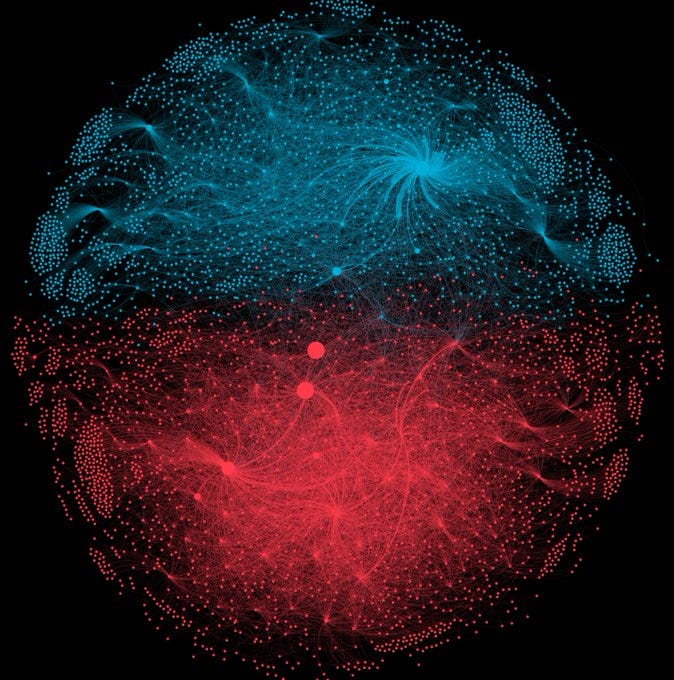
🔥Fire and fury💢
Stuff Circuit released a high-profile 1-hour documentary Fire and Fury which investigated the events and key individuals behind this year’s extended Parliament protests — and the associated disinformation and misinformation flows. Well worth a watch to get to understand how the “movement” seemingly came out of nowhere, coordinated and then seemingly dissipated, and is now still bubbling away in the background.
Epistemic babble
Independent journalist Bernard Hickey (who has been *on fire* all year with his supremely excellent Substack The Kākā) was even more forceful than his usual: Misinformation threatens our national security:
“…Now, a significant portion of the population get most of their information and have most of their public debates in toxic online landscapes of extreme misinformation, disinformation and hyper-emotional shouting matches. These debates are often purely performative demonstrations of tribal fealty and rarely become genuine attempts to understand and come to some new joint position.
This is no accident. The algor[i]thms developed by Facebook and Google’s Youtubes1 (sic) are designed to amplify the most ‘engaging’ comments, news and videos. These the ones that attract the most likes and shares. The most hate and love. The most extreme positions. It has only taken a decade since the widespread distribution and adoption of smart phones for the public debates of most western countries to become ever more extreme and just plain stupid…
…No more. This has to stop. This type of ‘protest’ is actually a threat to our national security and health and should be treated as such. It is not just an inconvenience or even a tragic case of mass hysteria. It is costing us lives. It could threaten our democracy, as it has in other countries…”
Bernard’s points were echoed by UK academic Elizabeth Seger in BBC Future this week: The greatest security threat of the post-truth age:
“The terms "national security" or "cyber-security" may be familiar – but what about "epistemic security"? If societies lose it, they will struggle to tackle some of the most worrying crises of the 21st Century, from pandemics to climate change…
“…One of the worst-case scenarios we called "epistemic babble". In this future, the ability for the general population to tell the difference between truth and fiction is entirely lost. Although information is easily available, people cannot tell whether anything they see, read or hear is reliable or not. So, when the next pandemic comes along, co-operation across society becomes impossible. It's a chilling idea – but Covid-19 has shown that we're closer than we might once have thought.”
In Aotearoa, the government is certainly now aware of the risks, with misinformation placing 2nd in the list of perceived threats to national security…
….although what actions are being taken are still unclear, particularly with a hotly-contested general election in October next year.
The destabilising threat of information pollution?
Estonia is promoting media literacy for “disinformation inoculation”
Regular Memia commenter Matt Boyd from Adapt Research linked back to his prescient piece in 2018: Keeping our eye on the laser phish: Information pollution, risk, and global priorities, which contains this graph👀:
"Children need to grow up with information literacy. I don’t mean just how to interpret a media text, or how to create digital content. I mean they need to learn how to distinguish real from fake, and how information spreads due to the system of psychological heuristics, network structure, frequency and source biases, and the content appeal of certain kinds of information. These are critical skills in a complex information environment and we have not yet evolved defenses against the current threats."
Musk / Twitter SNAFU
In amongst all of this concern about mis/disinformation spread, Twitter — a relatively small but highly influential social network — ended up being the subject of much drama during 2022.
After founder and long-time CEO Jack Dorsey stepped down at the end of 2021, Twitter stumbled on largely directionless until receiving the first hostile fire from US billionaire Elon Musk:
Thereafter followed a dizzyingly chaotic on/off/on again/off again takeover saga until finally Musk became the owner and “Chief Twit” of Twitter on October 27, 2022, after acquiring the social media company for a cool US$44 billion (right in the middle of a huge tech valuation downcycle…)
Since then… endless attention-sucking melodrama, sackings, late night code reviews, policy chaos, hordes leaving the platform desperately seeking something else… (So far I’ve tried Mastodon, Post, Farcaster and waiting for Bluesky… but still (just) clinging onto my Twitter presence…).
More significantly, after rapid layoffs of many developers, executives and the entire Twitter Safety Council, it’s pretty clear that Twitter won’t be keeping up its monitoring and content moderation activities. (And this, arguably, is what many of Musk’s “anti-woke” supporters are aiming for…)
At the time of this post, Musk had just closed this poll after apparently speaking with his Qatari investors at the world cup final (see Memia 2022.50 out tomorrow):
The man(-child) is a vortex of oxygen-sucking chaos. We should all try not to get pulled in.
Swarms, Egregores and Autocults
Finally on the topic, for me this was the most mind-stretching discussion of the year about what may actually be going on — basically four different perspectives on the emergence of ubiquitous AI intermediating “between” all human minds — Swarms, Egregores, and Autocults.
📈6. A digital technology breakthrough every week
In amongst the futuregazing and geopolitics, I spend a lot of my time scanning the wires and covering horizon-changing technology as it emerges. This year has been another in which I’ve really sensed the acceleration of technology change happening around us, particularly with software and AI.
😶🌫️Generative blah blah
Towards the end of 2022 it’s been getting a bit same-y having my mind blown by the latest advances in generative AI *every week*…
DALL-E 2
It started in April with OpenAI releasing an increment on 2021’s DALL-E Text-To-Image model. Everyone’s minds were blown.


DALLE-2 was closely followed by several other incredibly powerful text-to-image models:
Imagen (Google)
and most importantly, Stable Diffusion which produced much the same outcomes as the proprietary models (often better) but published the model as open source.
(Sometimes the AI doesn’t always get it quite right!)
Soon we were interpreting the existential implications for the entire industry of stock imagery. But more profoundly, the question of “copyright” will surely dissolve into an impractical mess now — although the underlying models are trained on millions of original artworks, photographs around the web, anyone trying to enforce a copyright claim will have a hard time trying to build a legal case on a model of all human media produced (so far) will have an uphill journey. (No doubt they will try…).
The other implication: what happens with 99.9999% of all internet content is AI-generated?!
Also amusingly, people started to find “ghosts” in the machine:





DALLE-2 was followed by many other significant AI advances in 2022 (full timeline here). A few highlights:
Meta AI unveiled the first speech-to-speech translation system which works with spoken-only (unwritten) dialects
Google announced an AI language model supporting the world’s 1,000 most spoken languages
Deepmind (owned by Alphabet) openly published the AlphaFold Protein Structure Database as “a gift to humanity”.
Demis Hassabis, DeepMind CEO, was quoted that the database now makes finding a protein structure – which previously often took years – “almost as easy as doing a Google search”.
Meta released its new Galactica LLM model for science… but pulled it after 3 days once users discovered that it generated biased and incorrect scientific papers.
DeepMind’s AlphaCode outperformed many human software programmers — beating OpenAI’s 2021 model Codex, previously the state of the art.
THEN at the end of November 2022, OpenAI introduced ChatGPT, a generative text model built upon a new GPT 3.5 Large Language Model (LLM) trained using Reinforcement Learning from Human Feedback (RLHF), and the world’s head exploded.

In Memia 2022.48 I covered a number of early ChatGPT use cases …
🤖Newsletter writing:
(The end result was still not quite as good as the real thing 🤭 but how far away now…?
Google search replacement….a better UX for search queries, together with a consumption model of microcents per query — potentially neutralises any advertising-driven search engine business model going forward.
Education: complete disruption of traditional education right up to university level:
Sarcasm:
You can even ask it to write jokes:
The implications for productivity, content overload and job replacement are only just starting to be absorbed. 2023 is going to be a wild ride…
Have a go with the ChatGPT research release yourself here: https://chat.openai.com/chat
🥽🤷A disappointing year in the Meta-verse…
Despite all of the pent-up hype from 2021 on the imminent arrival of a “Metaverse”, VR/AR/XR failed to deliver in 2022. Mark Zuckerberg’s Meta continued to burn through billions every quarter, producing some impressive hardware but a pretty lame user experience. Apple kept their imminent product release a well-kept secret - the only signficant highlight was the low budget
Quest Pro: In October Meta Reality Labs finally unveiled the long-awaited high spec headset to market. Here’s what US$15 Billion (so far) of R&D spending buys you:

The Quest Pro headset retails at US$1500 but so far the reviews of the software experience have been underwhelming. The flagship Horizon Worlds VR environment with its low-res, legless (legs coming soon) cartoon characters is still years away from being anywhere near compelling (cf. Unreal Engine 5).
The three most exciting pieces of tech demoed are still very much at research stage: photorealistic avatars, instant codec avatars and the latest iteration of the electromyography (EMG) “telepathic” interaction devices which inherit from the 2019 acquisition of Ctrl Labs.
like several other major tech companies their stock price has plummeted they have announced a major round of layoffs since. And the pace of innovation at Meta drove John Carmack to quit in frustration at the end of the year.
Meta will have been disappointed by the reception of the Quest Pro…Nonetheless Meta are first mover in this space and still positioned to become one of very few hardware platform owners if they keep to the path.
…while mainstream XR is in the wings…
All the Zuckerberg hype about a “metaverse” has been studiously avoided by other players in the extended reality (XR) space. Going into 2023:
All eyes are on Apple as their secret flagship XR device is strongly rumoured for launch next year:
The Tilt Five is an augmented reality gaming headset invented by AR industry legend Jeri Ellsworth. Unlike products from Microsoft, Magic Leap and others, Tilt Five focuses on a new tabletop gaming approach to AR rather than full 360-degree vision.
The company sold out their initial Kickstarter and production units of these glasses are now shipping - the whole kit is just US$359.
See this hands-on video with Ellsworth herself … the product looks impressive! (Now imagine the tabletop vertical and at eye level, could replace a monitor…?)
Also keep an eye out in 2023 for:
Magic Leap
HTC:
A Pantheon of synthetic humans
And yet more mindblowing demos… Hong Kong-based PantheonLab.AI released this video of their new synthetic human technologies at work - another advance on Unreal Engine Metahuman Creator - “people” made with this tech are now just about indistinguishable from the real thing.
Crypto crashed
For the last two years I’ve been generally positive on the efficiency and governance arguments for cryptocurrencies, decentralised finance (“DeFi”) and decentralised computing (“Web3”) generally. But 2022 was the year the crypto bubble popped spectacularly. Briefly:
Crypto abruptly showed that its only proven use case so far is financial speculation:
Total crypto market capitalisation was down from its highs of US$3Trn at the end of 2021 to just over $800Bn
Meta closed its ill-fated Diem cryptocurrency project in the face of continued regulatory uncertainty
The value of NFTs predictably headed to zero and the technical infrastructure underneath some of them failed
Terra's journey from an underdog payments app in South Korea to a US$60 billion crypto ecosystem crashed abruptly in May with the value of UST and LUNA heading towards zero.
And at the end of the year, Bahamas-based FTX, led by high-profile “effective altruist” Sam Bankman-Fried, was exposed as a massive ponzi scheme leaving a hole of at least US$1 billion of client funds. But so far minimal fallout in the “real” economy …. it appears to have been just a badly-run playground casino…
“I have over 40 years of legal and restructuring experience. I have been the Chief Restructuring Officer or Chief Executive Officer in several of the largest corporate failures in history. I have supervised situations involving allegations of criminal activity and malfeasance (Enron). I have supervised situations involving novel financial structures (Enron and Residential Capital) and cross-border asset recovery and maximization (Nortel and Overseas Shipholding). Nearly every situation in which I have been involved has been characterized by defects of some sort in internal controls, regulatory compliance, human resources and systems integrity.
Never in my career have I seen such a complete failure of corporate controls and such a complete absence of trustworthy financial information as occurred here. From compromised systems integrity and faulty regulatory oversight abroad, to the concentration of control in the hands of a very small group of inexperienced, unsophisticated and potentially compromised individuals, this situation is unprecedented.“
— Former Enron Liquidator John Jay Ray III, now in charge of what’s left of FTX

Kyla Scanlon covers everything you need to know about the FTX scandal here: The Most Entertaining Outcome.
Next up: Binance?
CBDCs rising
China accelerated the rollout of its e-CNY with payments for public transport.
The US accelerated R&D towards exploring a Central Bank Digital Currency (CBDC) and payment systems
Over 100 other countries are currently exploring or rolling out CBDCs
Here in Aotearoa, Te Pūtea Matua / Reserve Bank of New Zealand is considering its next steps after completing a series of consultations on the Future of Money.
Waiting for Network States
Techno-utopian thinker Balaji Srivinasan released his long-anticipated book The Network State. Lots of challenging, radical ideas. Not much execution, so far…
⛙From The Merge to The Splurge💦
On the positive side of the ledger (ahem), arguably the greatest technical accomplishment of 2022 was the uneventful “Merge” of Ethereum blockchains to become a “Proof of Stake” network, reducing energy consumption across the network by over 99.9% and laying down the foundations for next year’s planned upgrades: The Surge, Verge, Purge, Splurge and (new) Scourge.
Following such a turbulent year in crypto, Vitalik writes philosophically at the end of 2022 - What in the Ethereum application ecosystem excites me.
Drone swarms get real
Another significant technological breakthrough that I’ve been anticipating for some time happened in 2022, at least a year earlier than I expected.
A team of researchers from China’s Zhejiang University published their work developing intelligent microdrone swarming behaviour in the wild - the capabilities shown in their demo video below are profound - navigating easily through a thick forest, tracking a person even when occluded. Huge kudos to the research team for their achievements…
…BUT: as ExtremeTech sums up:
“The swarm has another interesting and somewhat alarming capability. The designers showed the algorithm can follow a human target through the environment with incredible accuracy. If one robot loses sight of the target because they walk behind a tree, another will be able to maintain visual contact. That means the first robot still knows where the target is and can pick up again on the other side of the obstruction. With more development, this technology could make it virtually impossible for a person to evade the swarm. What happens then is up to the operator of said drone swarm.”
Autonomous weapons are only just around the corner and this will change humanity’s future irreparably.
⚡7. Renewable energy, renewed
🔌Wind
I covered advances in renewable energy in ⏩Fast Forward Aotearoa instalment 22 — needless to say there are major signals of acceleration in renewable deployment.
Offshore wind power is about to get a whole lot more powerful: Siemens Gamesa’s new prototype turbine is a step-change in generation efficiency:


Why this represents a significant shrinkage in wind farm size:
“To put this into context, the UK used 294.2 TWh of energy in 2021. So for the UK to be entirely powered by 14–222 DDs, it would need to install 4,414 of them. In an offshore wind farm, the turbines need to be five rotor blades apart, so our turbines need to be 555 m apart, making this UK-powering wind farm 36.9 square km, or 14 square miles. That’s about 2% the size of London or about 62% the size of Manhattan.”
The turbine enters full production in 2024…
Aotearoa's first offshore wind farm was announced in Taranaki: the NZ$4billion, 65-turbine project will eventually generate 900MW of power – enough to power nearly 440,000 homes.
🔌Solar
Solar power conversion efficiency continues to improve in the lab. Some research materials are now approaching 50% conversion efficiency!
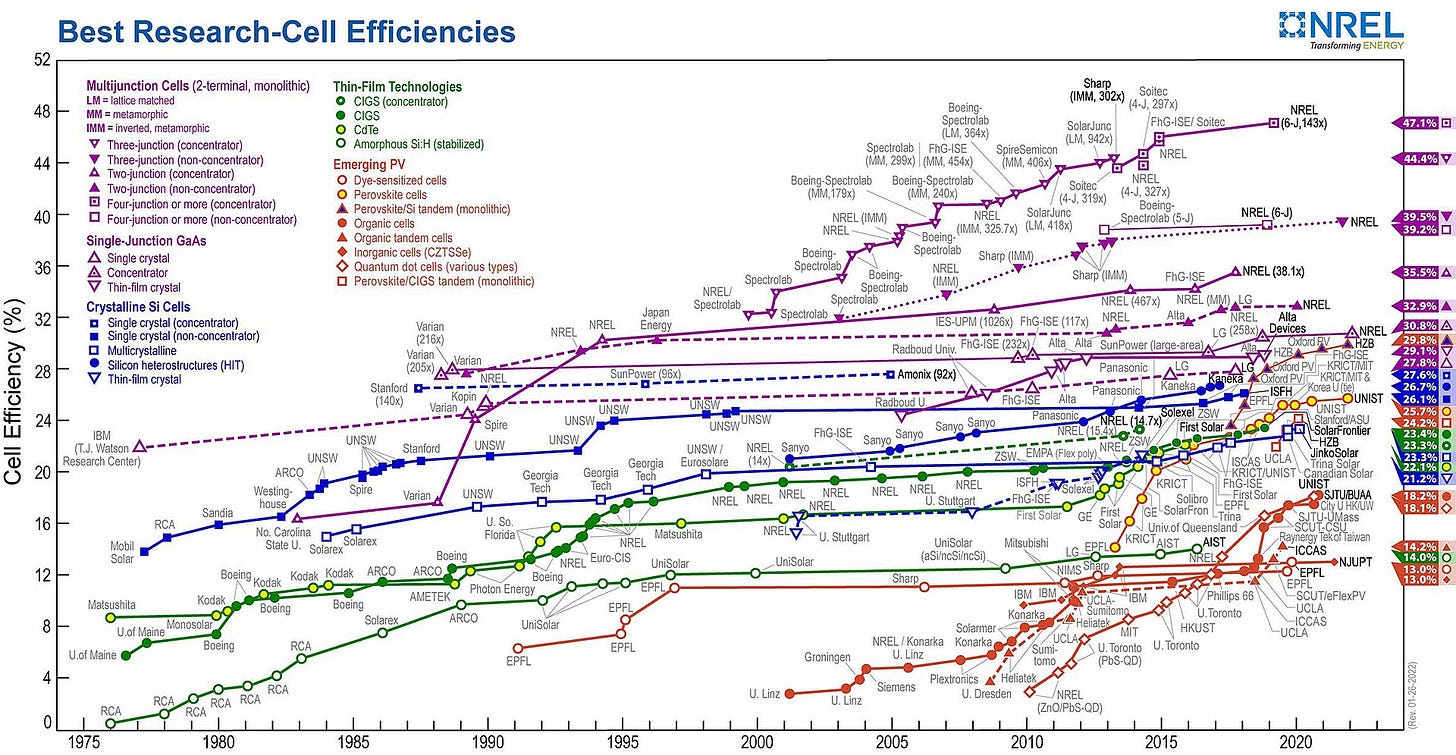
Solar installations around the world are skyrocketing as costs keep coming down exponentially. So far two major new solar farms have been announced in Aotearoa, both in Waitaha/Canterbury: Christchurch Airport announced Phase One of Kōwhai Park aiming to deliver a 220-hectare solar array capable of generating 150 megawatts of power and in Ashburton district, EA Networks announced plans for a new solar farm near the village of Lauriston - the plant is estimated to be capable of producing 50 MW of power.
🔋Storage
Solid-state batteries could have three times the energy density of conventional lithium-ion batteries, which might allow things like electric flight:
Hydrogen…hopium?
Despite hundreds of billions of US$ investment worldwide, still the promise of a green Hydrogen Economy are being dismissed in some quarters as Hopium.
The website New Zealand Hydrogen provides an overview of all major Hydrogen projects in Aotearoa currently underway: all at POC or feasibility study stage.

Of particular note are the moves by major electricity companies Contact Energy and Meridian to provide an alternative to the Tiwai Point aluminium smelter with a massive green hydrogen plant in Southland.
Nuclear fission
Finland opened a new long-term underground storage solution for nuclear waste as it asserts energy independence from Russia by investing in a major programme of new nuclear power stations.
(See also: Deep Time Underground, a fascinating article discussing the social anthropological findings from the engineers who designed Finland’s “Safety Case” for its massive new underground nuclear waste storage facility:
“The Safety Case explored whether potential radiation exposures to future populations would be safely below the country’s legal limits, even tens or hundreds of thousands of years from now.“ )
⚛️Fusion ignition
Right at the end of the year scientists at the National Ignition Facility at Lawrence Livermore National Laboratory in California announced that they had successfully achieved a net energy gain in a nuclear fusion reaction (the same process that powers the Sun) for the first time. The initial data from a fusion reaction:
“…produced about 2.5 megajoules of energy, which was about 120 per cent of the 2.1 megajoules of energy in the lasers [which started the reaction]”
The results are still being analysed but if they stand this is a major breakthrough and finally moves commercial fusion power from science fiction to “when”, not “if”.
Space-based solar
Another emerging transformative energy source is in its earliest stages of development: space-based solar power. Scientists in the UK, China and Aotearoa are working on the tech to make this real.
The UK government was reportedly considering a £16 billion proposal to build a massive solar station in space — a huge satellite equipped with solar panels which would beam energy back down to Earth, helping the UK achieve net-zero by 2050:
The satellite would need to be 1.7km in diameter, weighing around 2,000 tonnes and operate in geosynchronous orbit. The terrestrial “rectenna” would be roughly 6.7km by 13km, so likely to be placed offshore. The satellite would deliver up to 2GW of power to the UK.

Future transport: 🛫REGENT up in the air
Various renewable energy innovations are starting to filter through to our transport systems. The REGENT electric coastal seaglider being built and designed in the US had its maiden “flight” in 2022: (The company has an Aotearoa connection in Ocean Flyer- see Memia 2022.17 - certainly more elegant than the Soviet Ekranoplan!)
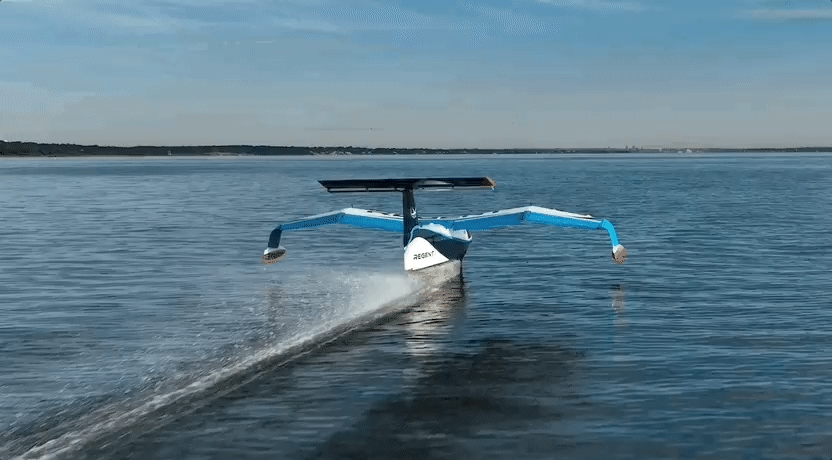
🧬8. Biotechnology - redesigning life itself
Although not my background field of expertise, I have been getting the sense during 2022 that advances in biotechnology are going to be fundamental to humanity’s near future — particularly now that it is accelerated by AI to enable “synthetic biology”. Just a few of this year’s significant advances:
🫀CRISPR me
In a world first right here in Aotearoa, a patient underwent a gene-editing treatment to lower their LDL blood cholesterol, promising a new era in heart disease prevention:
“gene editing is the big stick, because it’s one and done. You don't ever have to come back…It’s a very big deal, because atherosclerotic cardiovascular disease is the most common cause of death in the industrialized world, and LDL is the primary reason.”
— Eugene Braunwald, Advisor to Verve Therapeutics
Related: At the end of last year Amazon founder Jeff Bezos invested in Altos Labs who are developing cellular reprogramming technology aimed at reversing aging.
AI protein folding
As mentioned earlier, Deepmind open-sourced their Alphafold protein-folding database. In November, Meta AI also entered the game, releasing models of over 600 million potential proteins.
Professional Rejuvenation Athlete
At the end of the year Bryan Johnson began expanding his open-source Project Blueprint anti-aging regime by offering 10 spots at US$10,000/month to join him in becoming a “Professional Rejuvenation Athlete”.
👶Ectolife
With global fertility rates plummeting, futurist Hashem Al-Ghaili went all out with this concept for EctoLife, “The World’s First Artificial Womb Facility”:
Full press release here: Concept Unveiled for the World’s First Artificial Womb Facility, I’ve was waiting for something like this to arrive since covering an artificial womb for lamb foetuses in Memia 2021.40. Echoes of The Matrix or even the Uruk-Hai in Lord of the Rings.
Redesigning life itself
Synthetic biology — using computers to modify or rewrite genetic code — is advancing faster than most people are aware of and the implications will likely be profound for humanity. Futurist Amy Webb’s book The Genesis Machine (written with synbio expert Andrew Hessel) examines the future bioeconomy and provides “a foundation for thinking through the upcoming opportunities, risks and moral dilemmas posed by redesigning life”.
(Here’s a recording of their Talk At Google earlier this year discussing the book.
Artificial organisms
AI and biology are only just beginning to cross paths… what could possibly go wrong…?

🌌9. Putting out feelers to the universe
Another mind-opening theme of the year has been humanity’s renewed exploration of near space and the cosmos. So far in 2022 there have been 174 orbital and sub-orbital launches worldwide. Key milestones:
SpaceX
After achieving its landmark crewed spaceflights during 2021, leader SpaceX continued to flex its muscles and advance its capabilities:
Satellite internet services Starlink becoming critically strategic to Ukraine’s military success… with some interesting power play by founder Musk:
Received US FCC clearance to launch 7,500 Gen2 Starlink broadband satellites
Successfully completed the first fully-private astronaut mission to the ISS)
At the time of writing, was limbering up for the first sub-orbital test flight of its massive Starship launcher, with more than twice the thrust of the Saturn V, aiming to be the first launcher with total reusability:
Director of civil space development Nick Cummings even teased future plans for a Moon base staffed by “hundreds or thousands”:
🚀Rocket Lab - catch me if you can
With all the attention on the recent achievements of SpaceX, it’s worth giving a shout out to celebrate local(*ish) champion Rocket Lab’s latest success, catching a returning rocket with a helicopter just off Horomaka / Banks Peninsula (from 51min in):
Artemis
Nearly 50 years since Apollo 17 last went to the Moon, NASA’s Artemis I mission to launch an unmanned space capsule into moon orbit and back to Earth successfully completed after several launch postponements. The SLS rocket is *huge*:

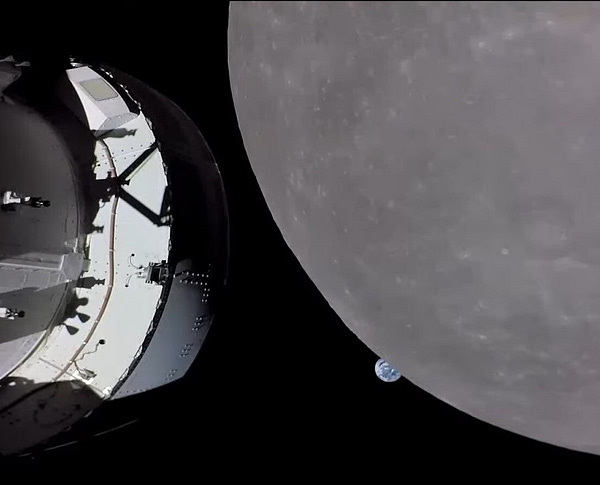
The successful mission is the first of NASA’s Artemis programme to return humans to the moon by 2025, years ahead of China’s planned crewed missions.
Asteroids
A new Earth-threatening asteroid highlights humanity’s unpreparedness for a direct strike: the largest hazardous asteroid found in the last 8 years showcases a little-known class of planet-killers.
In response, NASA’s first-of-its-kind Double Asteroid Redirection Test (DART) spacecraft intentionally slammed into the asteroid moonlet Dimorphos on Sept. 26 – altering its orbit by 33 minutes:
In other big asteroid news… In what could be the most cosmically significant news in a very long time…samples collected in 2019 from the Ryugu asteroid by Japan's Hayabusa2 probe have been discovered to contain more than 20 types of amino acid, the essential ingredient required to make proteins for life.
"…life could have been born in more places in the universe than previously thought"
— Kensei Kobayashi, professor emeritus of astrobiology at Yokohama National University

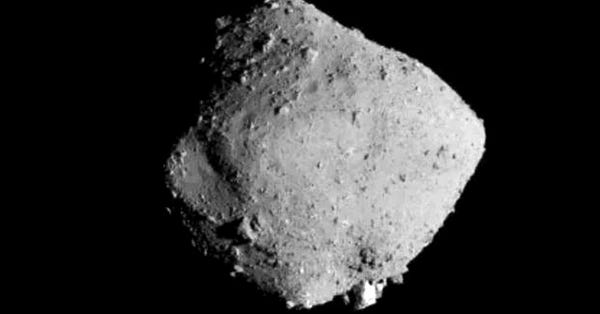
JWST
In January the international James Webb Telescope (named after NASA’s 1961-68 administrator) successfully completed its deployment since its launch from French Guiana on Christmas Day. The mission went like clockwork with the panels being unfolded and the telescope tested and calibrated. The JWST will now orbit the Sun at a distance of over 1.5 million km from Earth.
It took until July for NASA to unveil the first composite image from the James Webb Telescope:
The image above (“Webb’s First Deep Field”), of galaxy cluster SMACS 0723 as it appeared 4.6 billion years ago, covers a patch of sky “approximately the size of a grain of sand held at arm’s length by someone on the ground”.🤯 This first image provides the most detailed view of the early universe to date…revealing once again thousands of new galaxies in a tiny sliver of the night sky.
NASA released a full set of the first images from the JWST, check them out here if you haven’t seen them, mindblowingly beautiful:
Early scientific results from JWST could point to revisions to theories of dark matter and cosmological physics and the formation of galaxies after the Big Bang.
It forces a moment of reflection for me: on the vastness of the universe and our nanoscopic position within it…and how much better the world’s resources would be spent seeking more knowledge of how the physics of the universe works, rather than throwing bombs at each other in a tiny corner of a tiny planet in a tiny corner of a tiny galaxy…. it’s a fundamentally irrational allocation of resources and no doubt our near-future AI overlords will spot that straight off the bat.
🤩10. Surfing the Noosphere
As I’ve learned from the “most clicked” links, most readers’ highlights of each newsletter are often the random “nuggets and gems” which catch in my weekly trawling net every week.
As always, it’s hard to pick my top memetic highlights from this year but here goes:
🟩🟩🟩🟩🟩 Wordle’s Special K
An exquisite example of “K Factor”, also known as the viral coefficient, Wordle, an addictive daily word game invented by Brooklyn software engineer Josh Wardle for his partner who he knew loved word games came out of nowhere at the end of 2021 and rapidly spread to millions of users worldwide this year.
Part of that growth story is told here in Buzzfeed: How A Group Of Twitter Colleagues Blew Up Wordle, involving the close-knit Aotearoa Twitter community (where everyone is 1 step removed).
Wordle’s extreme virality is an interesting case study: in the SaaS industry people often talk about the K-Factor or Viral Coefficient, which is basically a measure of how fast your application spreads among your user base: the automated sharing of Wordle emoji grids on social media which has shifted the virality into the stratosphere. (Credit goes to Wellington-based @irihapeta for coming up with these):
(But of course now I have to mute the string “🟩🟩🟩🟩🟩” in all my social media feeds…)
🥋🎆🤯💯Everything everywhere all at once
Best film of 2022 by infinity - go see this at the cinema if you still can. Months later, my mind is still exploding from its joyous inventiveness, laugh out loud humour, multiverse metaphysics, tenderness, kung fu, talking rocks and costumes. One of the greatest films ever made without a doubt.
The Peripheral
Best TV series of 2022 — I devoured Amazon’s first series of The Peripheral. Highly engaging storytelling and visuals backed up by some solid acting performances. (Although the plot and characters deviate quite a bit from William Gibson’s original book — probably not a bad thing, try explaining The Patchers in 5 minutes of dialogue — the underlying quantum-entangled-multiverse-time-travel framework comes through elegantly intact and coherent. And wow, Inspector Lowbeer:




⌛What we owe the future
Will MacAskill is a prolifically high achieving philosopher at the University of Oxford’s Global Priorities Institute who helped to create the Effective Altruism movement and also co-founded 80,000 Hours (a non-profit that provides research and advice on “how you can best make a difference with your career”).
His book What We Owe The Future took 5 years to write and explores the theory and practice behind longtermism - the philosophical position that trying to make the world better for future generations should be a key priority of our time.
Here he is on a typically lengthy 80,000 hours podcast discussing the book:
“Homo sapiens have been around for about 300,000 years. If we live as long as typical mammal species, we will survive for hundreds of thousands of years. If we last until the Earth is no longer habitable, we will last for hundreds of millions of years. If one day we take to the stars and have a civilisation that is interstellar, then we could survive for hundreds of trillions of years. I don’t know which of those it will be. I think we should give some probability to all of them, as well as some probability to near-term extinction, maybe within our lifetimes or the coming centuries… But taking that all into account, and even on the kind of low estimates — such as us living as long as a typical mammal species — the future is truly vast. So on that low estimate, there are about 1,000 people in the future for every person alive today. When we look at those longer time scales that civilisation could last for, there are millions, billions, or even trillions of people to come for every person alive today.”
(Unfortunately the association with mega-fraudster Sam Bankman-Fried has somewhat dented EA’s reputation…)
Thoughts and robotic prayers
🤖🙏…and here’s a robotic mouth chanting algorithmically generated “prayers”. (One of those things that once seen, cannot be unseen!)
Cutting edge agritech
This made me laugh out loud, if only because I know a few teams working on exactly this use case right now…
🔮Choose your future
Finally….. Dyson Sphere aestivation all the way, baby.
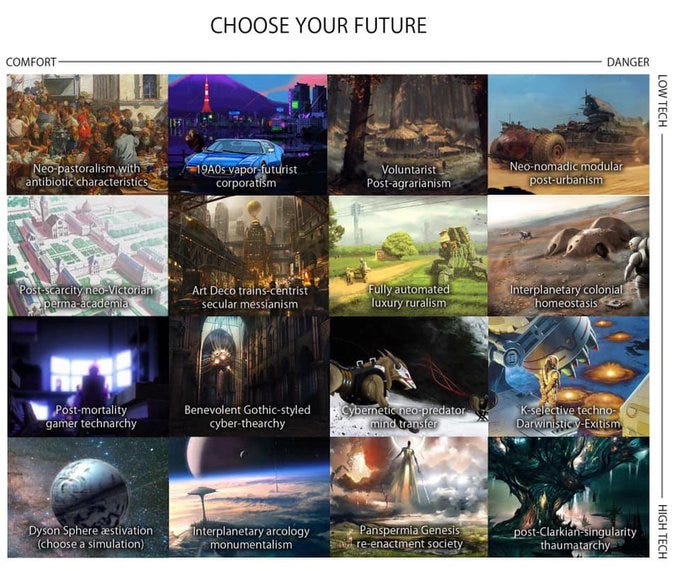
Polycrisis, what polycrisis?
Thank you to all readers for subscribing to Memia during 2022 and I’m looking forward to another year of weekly newsletters in 2023.
Who knows what the future holds in 2023?
For now, I’m away for a few weeks on my annual pilgrimage to the natural paradise of Mārahau in Tasman Bay / Te Tai-o-Aorere. Have a fantastic summer break and I’ll see you back refreshed and restored in January.
Ngā mihi
Ben










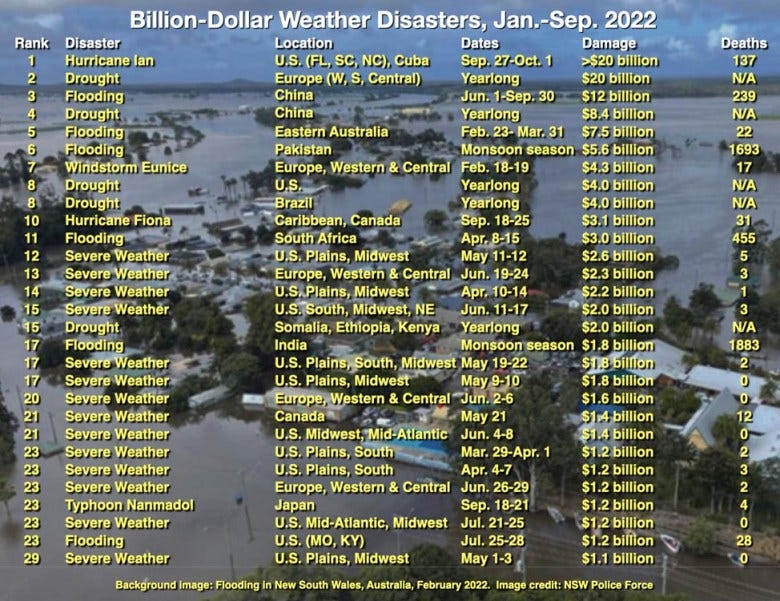


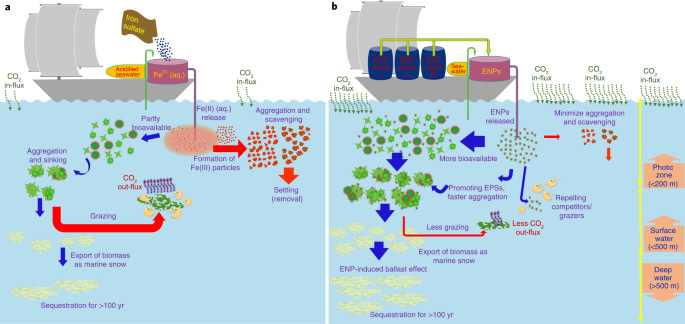



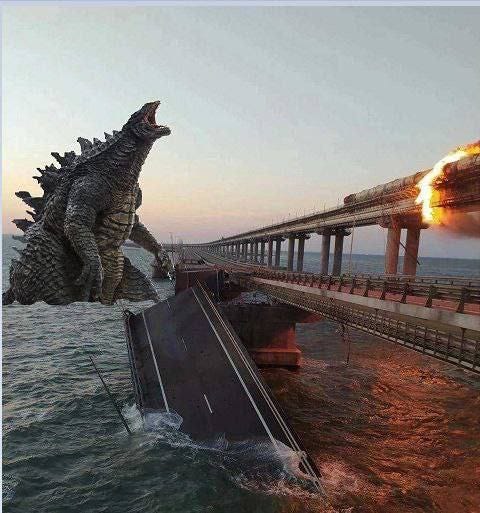



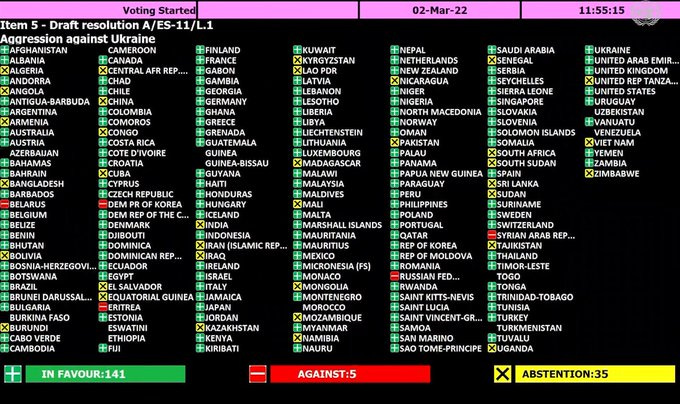

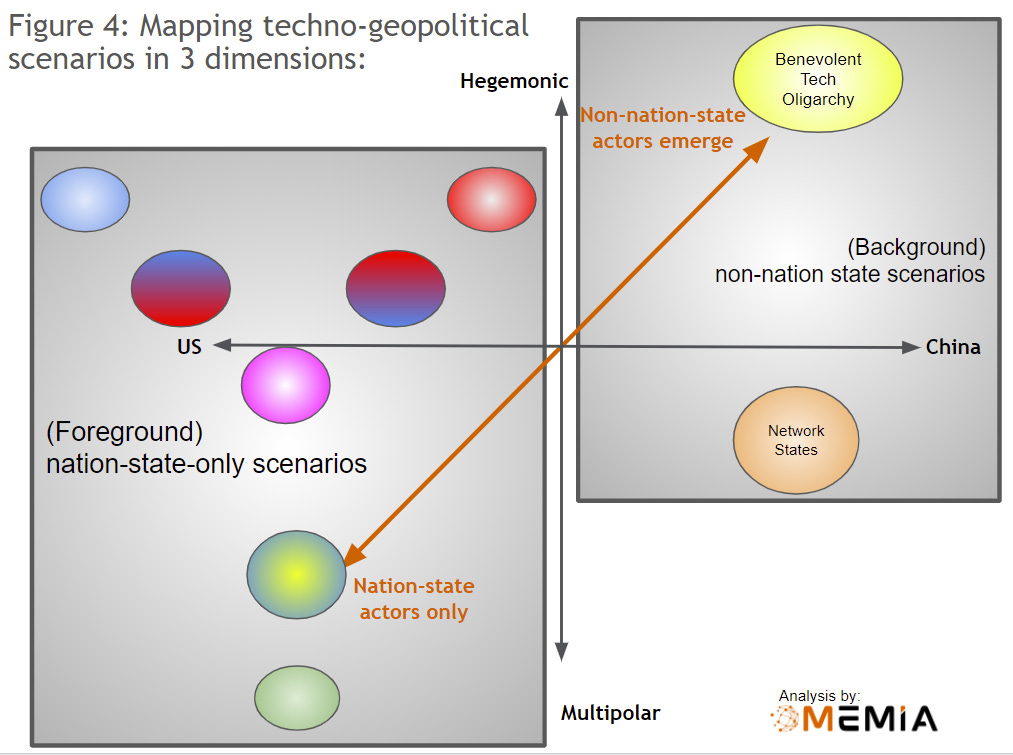

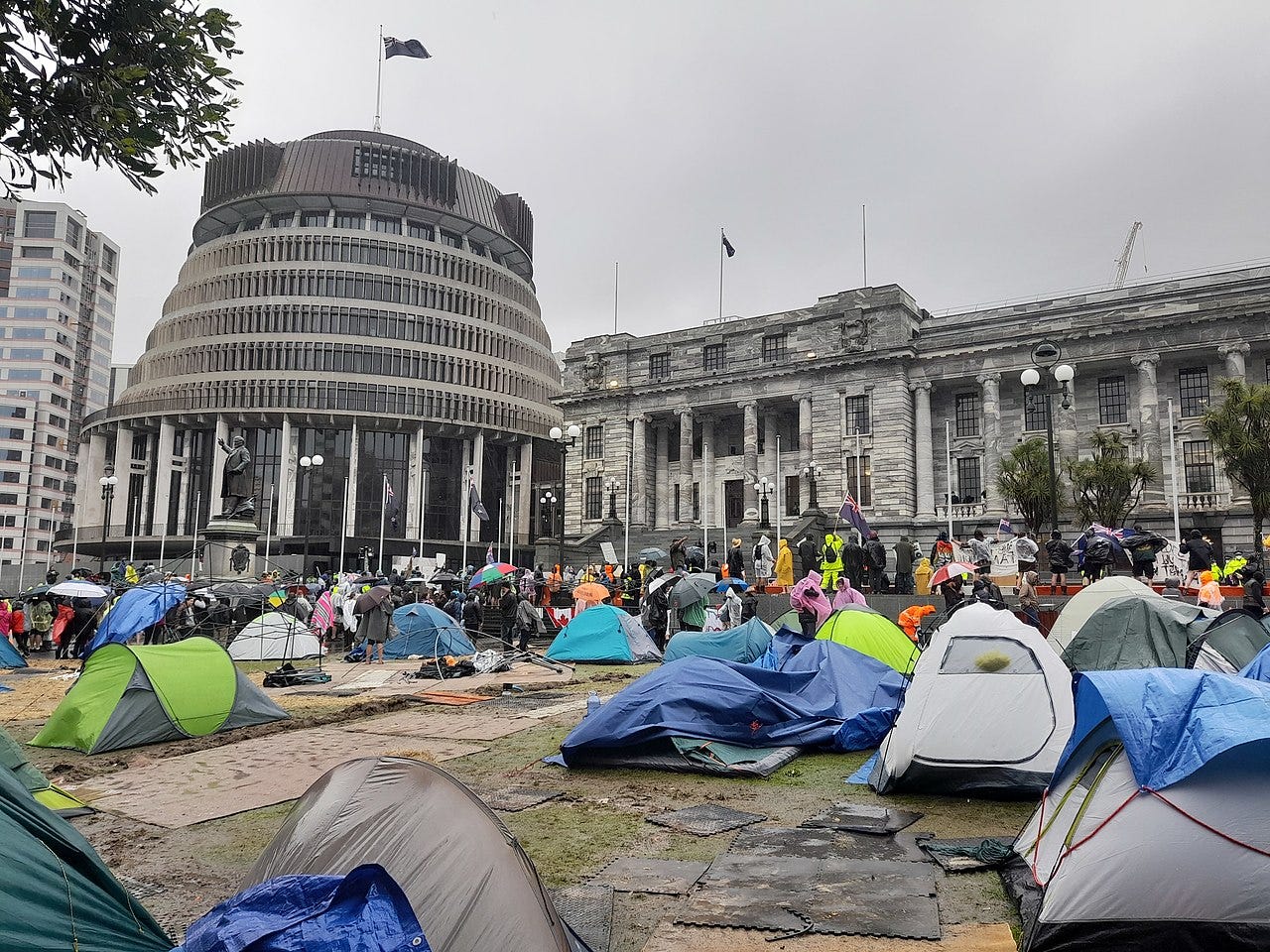



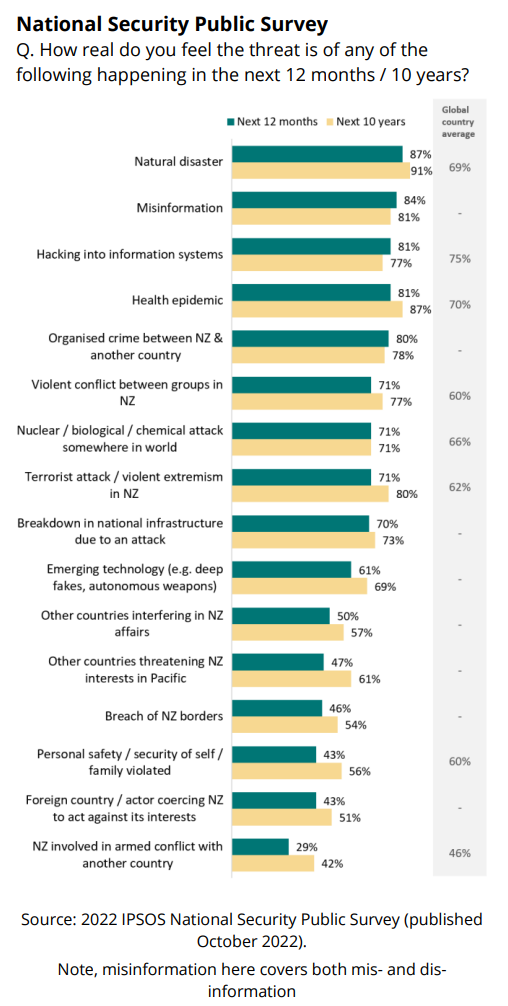

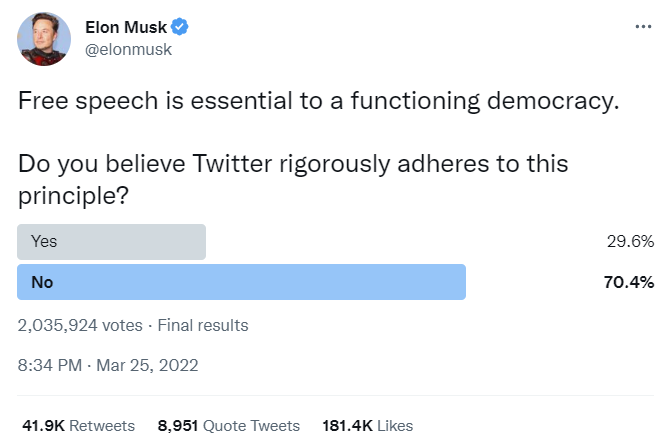


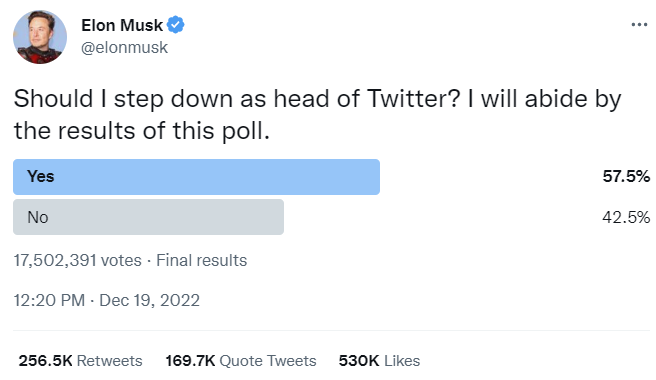



























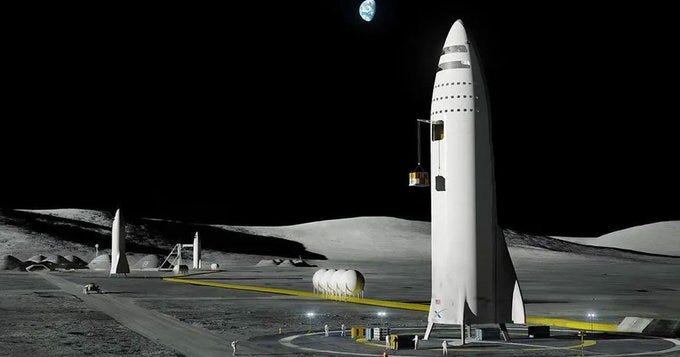

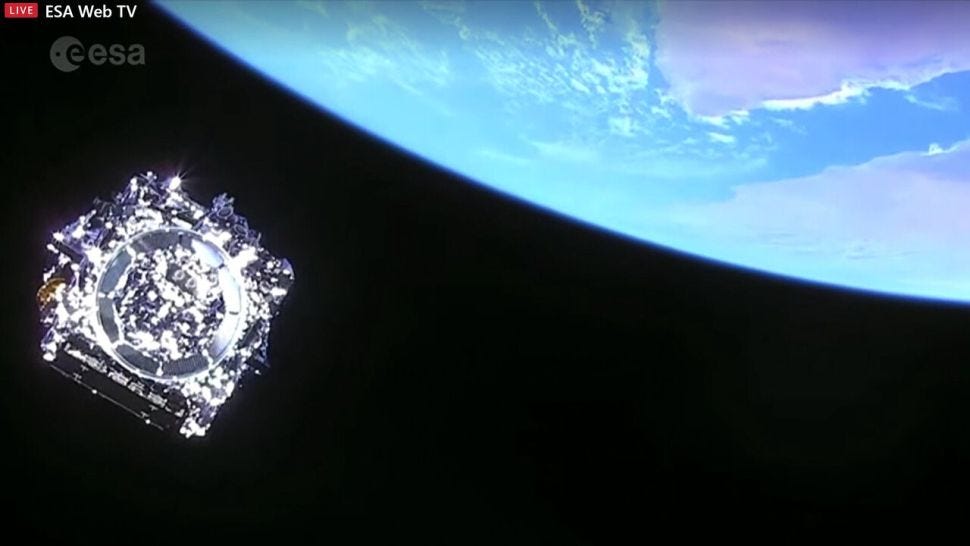


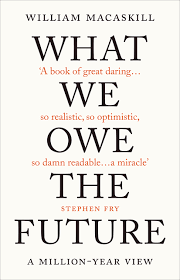




Thanks for the super summary Ben! Have immensely enjoyed Memia through 2022 :)